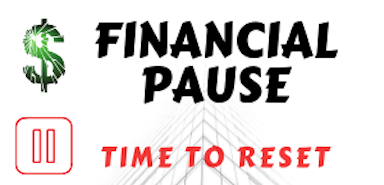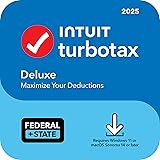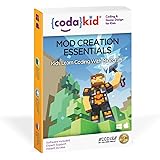Many people face financial stress, with a lot dealing with debt and worry about money.

Smart money habits can help ease this stress. Knowing how to manage money well is the first step to a debt-free life.
Changing how we shop and handle money is key to financial stability.
Key Takeaways
- Understand the impact of financial stress on daily life.
- Learn effective strategies for managing debt.
- Adopt smart financial habits for long-term stability.
- Discover ways to shift consumer behaviors positively.
- Explore resources for achieving financial relief.
Decoding the Debt Stress Dilemma: Why Modern Consumers Are Drowning in IOUs
Debt levels are rising fast, and it’s key to understand why. This debt problem affects not just personal finances but also the whole economy.

The Psychology Behind Overspending
Overspending often stems from deeper psychological issues. Emotional spending can be a way to deal with stress or anxiety. Studies show that financial worries can harm both physical and mental health.
“Financial stress is a big predictor of mental health problems, like anxiety and depression,” a study found.
How Economic Factors Contribute to Rising Debt
Economic factors are a big part of the debt problem. Things like low wages, high living costs, and easy credit create a debt trap. The wage stagnation means many people use credit to keep up with life.
- Rising costs of living
- Stagnant wages
- Easy access to credit
The Most Common Types of Consumer Debt
Knowing the types of debt people face is important. The most common include:
| Type of Debt | Description |
|---|---|
| Credit Card Debt | High-interest debt from credit card usage |
| Student Loan Debt | Debt incurred for educational expenses |
| Personal Loans | Unsecured loans for various personal needs |
By understanding these factors and debt types, people can start to solve their financial problems.
The “Loud Budgeting” Revolution: Embracing Openness to Conquer Your Debt
In today’s world, financial stress is common. A new movement, “Loud Budgeting,” is gaining popularity. It focuses on being open and transparent with finances, encouraging people to share their budgeting plans and goals.

What Is “Loud Budgeting” and Why It Works
“Loud Budgeting” is more than a budgeting method. It’s a community effort that uses social support to keep people on track financially. By talking openly about budgeting wins and challenges, individuals get support and new ideas from others facing similar issues.
Studies show that budgeting and debt consolidation help manage financial stress. “Loud Budgeting” adds accountability and support to these strategies. As a financial expert says,
“The key to successful budgeting is not just tracking expenses, but also having the courage to be open about your financial goals and challenges.”
Starting Your Own Loud Budgeting Journey
To begin your “Loud Budgeting” journey, set clear financial goals and make a realistic budget. Look for ways to cut back on unnecessary spending. Use that money for debt repayment or savings.
- Share your financial goals with a trusted friend or family member to gain support.
- Join online communities or forums where people discuss their budgeting experiences.
- Use social media to share your progress and connect with others who are on a similar financial journey.
By sharing your financial goals and challenges, you can benefit from the “Loud Budgeting” community’s collective wisdom and motivation.
Success Stories: Real People Who Talked Their Way Out of Debt
Many have used “Loud Budgeting” to beat debt and achieve financial stability. For instance, Sarah, a 30-year-old marketing professional, paid off her $10,000 in unsecured debt by sharing her budgeting journey online.
These stories show the power of “Loud Budgeting” in managing finances. By embracing openness and transparency, people can find the support and motivation needed to conquer debt and achieve financial freedom.
Beyond the Card: Navigating the Rise of ‘Buy Now, Pay Later’ (BNPL)
The rise of BNPL services is changing how we buy things and manage money. This method lets us delay payments, offering more flexibility. But, it’s key to know the full impact of using BNPL services.
The Hidden Dangers of BNPL Services
BNPL might seem appealing, but it comes with hidden dangers. Two big risks are how it can hurt your credit score and the psychological trap of delaying payments.
Impact on Credit Scores
BNPL services might not check your credit to start, but missing payments can harm your score. It’s vital to pay on time to keep your credit healthy.
The Psychological Trap of Delayed Payment
BNPL can lead to overspending by letting you delay payments. The ease of not paying right away can make you spend more than you should.
When BNPL Makes Financial Sense
Despite the risks, BNPL can be smart in certain situations. For example, it can help with essential buys during tough times. It’s also good for managing cash flow if used wisely.
| BNPL Scenario | Financial Implication | Consumer Impact |
|---|---|---|
| Essential Purchases | Temporary financial relief | Reduced financial stress |
| Cash Flow Management | Better financial planning | Increased financial flexibility |
| Large Purchases | Manageable payment plans | Ability to afford bigger-ticket items |
To get the most out of BNPL while avoiding its downsides, stay alert and informed. Knowing the risks and using BNPL wisely can help you make the most of it.
No-Spend November & Other Viral Challenges: How Gamifying Your Finances Works
Gamification is changing how we handle money. It makes saving and paying off debt fun. By turning financial goals into challenges, it makes the experience more interactive and motivating.
No-Spend November is a big hit. It’s when people stop buying things they don’t need for a whole month. This challenge helps save money and breaks bad spending habits.
Popular Financial Challenges That Actually Work
Many financial challenges are popular because they work well. Here are a few:
- No-Spend Challenges: Like No-Spend November, they help cut down on unnecessary spending.
- Savings Challenges: For example, the “52-week savings challenge” where you save an amount equal to the week number (e.g., Week 1: Save $1, Week 2: Save $2).
- Debt Snowball Challenge: This involves paying off debts one by one, starting with the smallest balance.
These challenges are effective because they set clear goals and give a sense of achievement as you move forward.
Creating Your Own Custom Money Challenge
Creating a challenge that fits your financial goals can be even more motivating. Here’s how to make your own:
- First, figure out what you want to achieve, like saving for something or paying off debt.
- Then, set specific goals. For example, “I want to save $1,000 in 3 months” or “I will pay off $5,000 in student loan debt within the next year.”
- Next, decide the rules of your challenge. You might choose to eat out less or cancel subscription services.
Tracking Progress and Staying Motivated
Keeping track of your progress is key to staying motivated. Use a spreadsheet or a financial app to watch your savings or debt repayment. Seeing your progress can really motivate you.
Here’s a simple example of a tracking table:
| Week | Savings Goal | Actual Savings | Progress |
|---|---|---|---|
| 1 | $100 | $120 | Exceeded |
| 2 | $100 | $100 | Met |
| 3 | $100 | $80 | Below |
By making your finances a game, you can make managing debt and saving more fun and rewarding. Whether you join popular challenges or create your own, the important thing is to find a method that works for you and stick to it.
From Splurge to Save: Mastering the Mindset Shift for Financial Freedom
Getting to financial freedom means changing how you think about money. It’s not just about spending less. It’s about seeing money in a new light. As a financial expert says,
“The key to financial freedom is not just about saving money, it’s about changing your relationship with money.”
Identifying Your Spending Triggers
First, figure out what makes you spend. Do you buy things when you’re stressed or bored? Knowing your spending triggers helps you avoid unnecessary costs. This way, you can cut down on unsecured debt.
Practical Habits That Build Wealth Over Time
Building wealth is more than saving. It’s about making smart financial choices. This includes creating a budget, investing wisely, and avoiding debt. These habits help you achieve debt relief and secure your financial future. Warren Buffett once noted,
“Do not save what is left after spending, but spend what is left after saving.”
The 24-Hour Rule for Impulse Purchases
One good way to stop impulse buying is the 24-hour rule. Wait 24 hours before buying something you want. This helps you decide if you really need it. By doing this, you can avoid a lot of unnecessary spending and work on reducing your financial debt.
By using these strategies and sticking to them, you can make big steps towards financial freedom. It’s a journey that needs patience, discipline, and persistence. But the benefits are worth it.
Breaking Free from Debt Stress: Your Guide to Smarter Repayment Strategies
Understanding your debt repayment options is key to financial freedom. It’s important to choose the right strategy for your situation. This will help you manage your debt effectively.
When Debt Consolidation Is the Right Move
Debt consolidation combines multiple debts into one loan with a lower interest rate. This makes your finances simpler and can save you money on interest.
- Simplified Finances: Managing one loan is easier than many.
- Lower Interest Rates: If your debts have high interest, consolidating can lower your payments.
- Reduced Stress: It simplifies managing due dates and payments.
Comparing Debt Snowball vs. Debt Avalanche Methods
There are two main debt repayment strategies: the debt snowball and debt avalanche. Knowing the differences helps you pick the best for your situation.
- Debt Snowball Method: Pay off the smallest debts first, no matter the interest rate. Move to the next smallest after each is paid off.
- Debt Avalanche Method: Focus on debts with the highest interest rates first. This saves more money in interest over time.
Negotiating with Creditors: Scripts That Work
Negotiating with creditors can lower your debt. Using the right scripts can help you get better terms or settle debts for less.
- Be Honest: Share your financial situation clearly.
- Be Persistent: Keep negotiating even after initial rejections.
- Know Your Rights: Understand consumer laws that protect you.
By using these strategies, you can manage your debt and achieve financial stability.
The Great Reset: How Cautious Spending Is Becoming the New Norm
After the pandemic, people are spending less and being more careful with money. This change is not just a short-term fix. It’s a big shift in how we handle our finances.
Post-Pandemic Financial Behaviors
The pandemic made people more aware of their finances. They’re now better at managing financial debt. They’re looking for ways to cut costs and save more.
Managing debt is a big part of this new approach. People are being more careful with unsecured debt. They’re choosing more stable financial habits instead.
| Pre-Pandemic Behavior | Post-Pandemic Behavior |
|---|---|
| Impulse buying and high credit card usage | Cautious spending and reduced credit card debt |
| Less emphasis on savings | Increased focus on building emergency funds |
| Higher tolerance for debt | Greater awareness and management of financial debt |
Building a Sustainable Spending Plan
Creating a good spending plan means knowing your financial goals. It’s about finding a balance between enjoying now and planning for later.
To do this, you can:
- Track where your money goes
- Set clear financial goals
- Focus on needs over wants
- Avoid unnecessary unsecured debt
Finding Balance Between Frugality and Quality of Life
Being frugal is key to managing money, but so is enjoying life. It’s about spending wisely, based on what’s important to you.
For example, canceling unused subscriptions can save money. But you can still enjoy things that matter to you.
By spending more thoughtfully, you can save for the future and still enjoy today.
Digital Tools & Fintech Hacks: Using Tech to Tackle Your Debt Head-On
Today, managing debt is easier than ever. This is thanks to fintech tools and apps that help consumers deal with their financial issues. Technology has made it easier for people to control their debt.
Must-Have Apps for Debt Management
There are many apps out there to help with debt management. These apps offer services like budgeting and credit monitoring.
Budgeting Tools
Budgeting is key to managing debt. Apps like Mint and You Need a Budget (YNAB) help users track their spending. They keep track of financial obligations.
Debt Payoff Calculators
Knowing how much to pay each month to clear debt is motivating. Debt Payoff Calculator apps give a clear plan for repaying debt.
Credit Monitoring Services
Services like Credit Karma and Experian offer free credit scores and reports. They help users keep an eye on their credit health. This makes informed financial decisions easier.
Automating Your Way Out of Debt
Automation is a strong tool for paying off debt. Setting up automatic payments ensures on-time payments. Many banks and apps offer this feature, making debt repayment easier.
Using Round-Up Features to Accelerate Debt Payoff
Apps like Qapital and Digit have round-up features. They round up purchases to the nearest dollar or save small amounts regularly. These features help pay off debt faster without affecting daily spending.
Using digital tools and fintech hacks can help create a strong debt repayment strategy. Whether through budgeting apps, automated payments, or round-up features, technology offers many ways to become debt-free.
Your “Why”: Aligning Your Spending Habits with Your Long-Term Goals
Starting your journey to financial stability means finding your ‘why’. This is the reason behind your spending choices. It’s key to aligning your spending with your long-term goals. This way, you make smart financial decisions that help you reach your goals.
Defining Your Financial Purpose
First, define your financial purpose. It’s about knowing what drives your financial choices and what you want to achieve. Experts say a clear purpose can greatly help in managing debt and building wealth.
To define your financial purpose, consider the following:
- What are your short-term and long-term financial goals?
- What motivates you to save or spend money?
- How do you want your financial situation to look in the next 5-10 years?
Creating a Values-Based Budget
A values-based budget aligns your spending with your personal values and goals. It’s about making thoughtful choices on how to use your money.
“A budget is telling your money where to go instead of wondering where it went.” – Dave Ramsey
To create a values-based budget, start by:
- Categorizing your expenses into needs and wants.
- Assigning a purpose to each category based on your financial goals.
- Regularly reviewing and adjusting your budget to ensure it remains aligned with your values.
| Category | Monthly Allocation | Purpose |
|---|---|---|
| Housing | $1,500 | Secure Living |
| Entertainment | $500 | Leisure and Relaxation |
| Debt Repayment | $800 | Becoming Debt-Free |
Visualizing a Debt-Free Future
Seeing your financial goals can motivate you. It’s about creating a mental or physical picture of what achieving your goals looks like.
To visualize a debt-free future, try:
- Creating a vision board with images representing your financial goals.
- Writing down your goals and placing them somewhere visible.
- Regularly reflecting on your progress and adjusting your strategies as needed.
By aligning your spending habits with your long-term goals, defining your financial purpose, creating a values-based budget, and visualizing a debt-free future, you can take significant steps towards achieving financial stability and freedom.
The Future is Frugal: Building a Resilient Financial Life in a Post-Pandemic World
As we move past the pandemic, having a strong financial life is key. Learning to live frugally and being ready for money challenges is vital. This means looking for ways to reduce debt and simplify money matters.
Being open and smart with money is important. Using tools like “loud budgeting” and digital apps for debt can help. It’s also crucial to make a budget that reflects your values and dream of a debt-free life.
To build a strong financial future, we need to change how we spend money. This shift towards careful spending and planning will lead to financial freedom. It prepares us for any economic ups and downs ahead.











